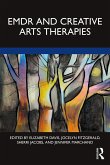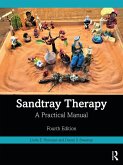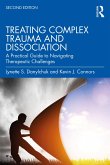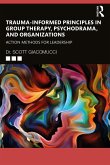Sandtray Applications to Trauma Therapy presents the theory behind and the practicalities of using sandtray therapy in treatment with traumatized patients, both children and adults.
The book begins with a review of the most frequently asked questions that professionals ask themselves when using the sandtray. It then details the Barudy and Dantagnan model of trauma therapy to understand and integrate sandtray therapy with patients who have suffered trauma. Chapters describe the importance of neuroaffective communication, directive and non-directive working methodologies, and how to use the technique in regulation, empowerment, and resilient integration of trauma. A featured chapter by the second author, Dr. Raffael Benito, presents the neurobiology behind sandtray therapy, outlining step by step what happens in the brain of a patient during a sandtray session. Transcripts of clinical cases, sandtray images, and true client stories are integrated throughout.
This practical volume will appeal to sandtray practitioners, trauma therapists, psychologists, and psychiatrists working with patient experiences of abandonment, mistreatment, or sexual abuse, among others.
The book begins with a review of the most frequently asked questions that professionals ask themselves when using the sandtray. It then details the Barudy and Dantagnan model of trauma therapy to understand and integrate sandtray therapy with patients who have suffered trauma. Chapters describe the importance of neuroaffective communication, directive and non-directive working methodologies, and how to use the technique in regulation, empowerment, and resilient integration of trauma. A featured chapter by the second author, Dr. Raffael Benito, presents the neurobiology behind sandtray therapy, outlining step by step what happens in the brain of a patient during a sandtray session. Transcripts of clinical cases, sandtray images, and true client stories are integrated throughout.
This practical volume will appeal to sandtray practitioners, trauma therapists, psychologists, and psychiatrists working with patient experiences of abandonment, mistreatment, or sexual abuse, among others.
'Is a wonderful book that will illuminate practitioners, particularly those working with traumatised children and adolescents, in their task of helping these young people understand and overcome their traumatic experiences, build resilience and progress through a healthier, long-term developmental path in their lives. One of the outstanding strengths of the present book is that it is rooted in a secure base of more than one hundred years of child and adolescent mental health, from which it explores and digs deeply into the therapeutic applications of the sandtray technique, whilst integrating the domains of trauma, resilience, parental skills, personal development and neuroscience, within a framework of attachment-based thinking and practice.'
Arturo Ezquerro is a London-based consultant psychiatrist, psychoanalytic psychotherapist, and group analyst.
'The risk is that upon discovering the existence of therapeutic techniques as attractive and promising as the sandtray, they are applied with the illusion that these by themselves will be sufficient, neglecting the care that should be taken to apply, contextualize and integrate them in a process that is relational, affectively binding, empathic and mentalizing between therapist and patient. Thanks to their human quality, their extensive training and their rich clinical experience, the authors have the skills and sufficient authority to affirm that Traumatherapy is the ideal scenario that guarantees the effective and respectful application of the sandtray technique, applying it in the moment and adapting it to the uniqueness of each child or adolescent. The organization of the contents to work on in each block, following the neurosequential principle, is the best guarantee so that the therapeutic impact of using the sandtray keeps all its meaning and effectiveness.'
Jorge Barudy is a neuropsychiatrist, psychotherapist, family therapist, and trainer of the EFTA (European Association of Family Therapy). Maryorie Dantagnan is a pedagogue, psychologist, child psychotherapist and co-director of IFIV, Spain.
Arturo Ezquerro is a London-based consultant psychiatrist, psychoanalytic psychotherapist, and group analyst.
'The risk is that upon discovering the existence of therapeutic techniques as attractive and promising as the sandtray, they are applied with the illusion that these by themselves will be sufficient, neglecting the care that should be taken to apply, contextualize and integrate them in a process that is relational, affectively binding, empathic and mentalizing between therapist and patient. Thanks to their human quality, their extensive training and their rich clinical experience, the authors have the skills and sufficient authority to affirm that Traumatherapy is the ideal scenario that guarantees the effective and respectful application of the sandtray technique, applying it in the moment and adapting it to the uniqueness of each child or adolescent. The organization of the contents to work on in each block, following the neurosequential principle, is the best guarantee so that the therapeutic impact of using the sandtray keeps all its meaning and effectiveness.'
Jorge Barudy is a neuropsychiatrist, psychotherapist, family therapist, and trainer of the EFTA (European Association of Family Therapy). Maryorie Dantagnan is a pedagogue, psychologist, child psychotherapist and co-director of IFIV, Spain.








